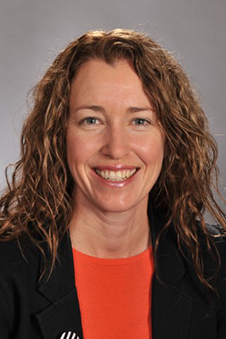The sale of tobacco only through liquor stores, petrol stations or pharmacies would considerably reduce the overall availability of tobacco and assist the Government in achieving its 2025 smokefree goal, new University of Otago research shows.

Dr Louise Marsh
The study's lead author from the Social and Behavioural Research Unit in the University of Otago's Department of Preventive and Social Medicine, Dr Louise Marsh, says substantially reducing tobacco availability has been identified as a crucial tobacco control strategy both internationally and in New Zealand and the study shows there would be an important reduction in overall availability of tobacco if sales were restricted.
“Decreasing the number of outlets that stock tobacco would help reduce youth smoking initiation, change community norms around tobacco use, decrease cues to smoke, particularly among those trying to quit and reduce the density of tobacco sales around schools.”
However, the research highlights inequities in availability would exist with access to tobacco in rural areas disproportionately reduced with fewer liquor stores or pharmacies, potentially resulting in increased travel costs for Māori and rural smokers to purchase tobacco.
In addition to the overall reduction in the availability of tobacco, the positive aspects of tobacco being only available through pharmacies are the potential for reduced opportunity for the sale of tobacco to minors and that pharmacists are already trained to provide brief smoking cessation interventions.
The research published today in the Australian and New Zealand Medical Journal of Public Health undertook a geospatial analysis of policy options for restricting tobacco policy in New Zealand.
The authors looked at various policies that could be implemented to change how tobacco is sold in New Zealand. These possible policies were: having tobacco available only from pharmacies, only from liquor stores or only from petrol stations and how that impacted on the clustering of tobacco retailers in deprived communities, density of retailers around secondary schools and urban and rural access to tobacco.
The analysis shows that if tobacco was only sold through liquor stores, petrol stations or pharmacies, the number of schools having at least one tobacco retailer located within 500m would reduce from 54 to 22 per cent.
“Reduced density of the sale of tobacco around schools would reduce curiosity and temptation concerning tobacco, diminish the normalising of smoking in the community and provide fewer opportunities and cues for adolescents to attempt to purchase tobacco,” Dr Marsh and her colleagues conclude.
The research identified a total of 5243 tobacco retail outlets in New Zealand with convenience stores (46 per cent), liquor stores (17 per cent) and supermarkets (13 per cent). Based on 502,000 current adult smokers, this means there is about one tobacco outlet for every 115 smokers.
That would reduce to one tobacco outlet for every 692 smokers if only sold through liquor stores, 582 smokers if only sold through pharmacies or 576 smokers if only sold through petrol stations.
For further information, please contact:
Dr Louise Marsh
Co-Director Social and Behavioural Research Unit
Department of Preventive and Social Medicine
Tel +64 3 479 7209
Email louise.marsh@otago.ac.nz
Liane Topham-Kindley
Senior Communications Adviser
University of Otago
Tel +64 3 479 9065
Mob +64 21 279 9065
Email liane.topham-kindley@otago.ac.nz
FIND an Otago Expert
Use our Media Expertise Database to find an Otago researcher for media comment.